Lukashenko: The nation’s ‘crown jewel’ is its nature
News
30.07.2025 | 14:47
In the northwestern part of Belarus
lies Belarus’ Lake District
, an area of pristine forests and crystal-clear lakes. It is renowned for hosting the nation's largest spa and wellness resort cluster, attracting over 100,000 visitors annually. For those yet to discover Belarus' Lake District, we wholeheartedly recommend going. This area is known for unique genetic and biological diversity. However, this corner of Belarusian nature was once at risk of being ruined because of the thoughtless economic activity and disorganized mass recreation. In a new episode of BelTA’s YouTube “After the Fact: Lukashenko’s Decisions” we will explore what nearly destroyed the Naroch area and how Aleksandr Lukashenko literally saved this unique natural treasure trove. We will look into which Belarusian region became a geographic and historic crossroads of Western and Eastern European cultures, and discover why Belarus captivates not only its neighbors but travelers worldwide.
How many rivers and lakes are there in Belarus?
First, some key facts. Did you know that Belarus sits on the watershed divide between river systems flowing to two different seas- the Baltic Sea and the Black Sea? The country is home to over 20,000 rivers with a combined length of 90,000 kilometers - enough to circle Earth twice. The longest river flowing through Belarus is the Dnieper. Within Belarus, the Dnieper stretches 666 kilometers, nearly the distance from Minsk to Moscow.
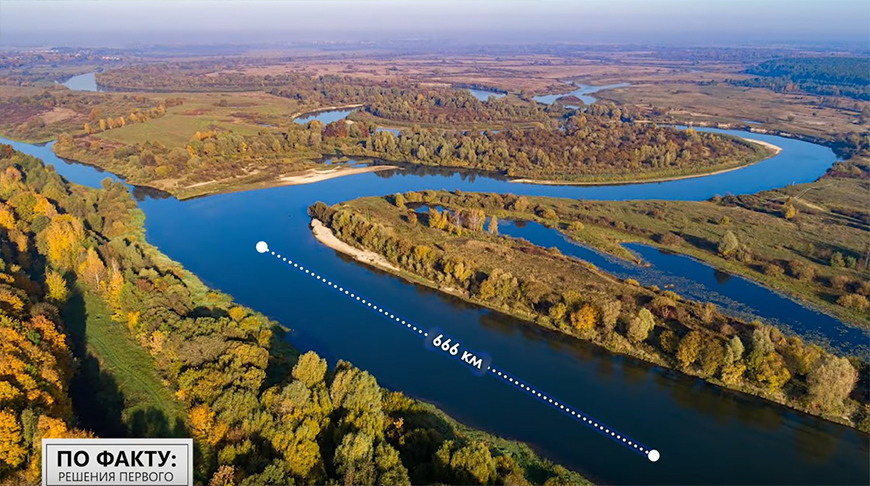
The country also boasts nearly 11,000 lakes. The largest ones, located in the northern region, form what’s often called the country’s “blue necklace”. These lakes were created 15,000-20,000 years ago by the retreating Valdai Glacier. Belarus' largest lake, Naroch, or more precisely the area surrounding it, will be in focus of this episode.
How did Belarus revitalize the Naroch area?
Back in the early 2000s, Aleksandr Lukashenko emphasized that the Naroch area was a unique lake district whose potential should be harnessed for tourism development. “This is a national treasure asset of Belarus. We must tidy this place up and reestablish ecological balance,” the president insisted. Back in the day the region was struggling. The Naroch area had suffered significant damage. Even the measures implemented during the Soviet era failed to achieve the desired results.
Environmental situation worsened relentlessly as poaching expanded unchecked. Faced with these mounting threats to this unique ecosystem, President Aleksandr Lukashenko passed a decree in 1999 to establish the Narochansky National Park spanning 87,000 hectares. Now it is one of Belarus’ four protected areas. Nearly 20% of its area comprises about 50 lakes.

However, due to fundamental mismanagement and unacceptable neglect by both national and local authorities toward this invaluable national asset, no substantive improvement was achieved in rehabilitating the lake and adjacent areas. This failure ultimately compelled Aleksandr Lukashenko to convene a meeting to adopt a state program for ecological restoration of the Naroch area.
Order must be everywhere, the head of state demanded, along lake shores, across fields, and through forests. At the same time, Aleksandr Lukashenko emphasized that while local residents must retain their traditional fishing rights, poaching cannot be tolerated.
“The preservation of our national heritage, dear friends, demands our utmost responsibility. We must cherish our nature. We must do everything necessary to restore order, including in the Naroch area. The program we have developed in order to improve the situation in the Narochansky National Park must be implemented on schedule,” the Belarusian leader emphasized.
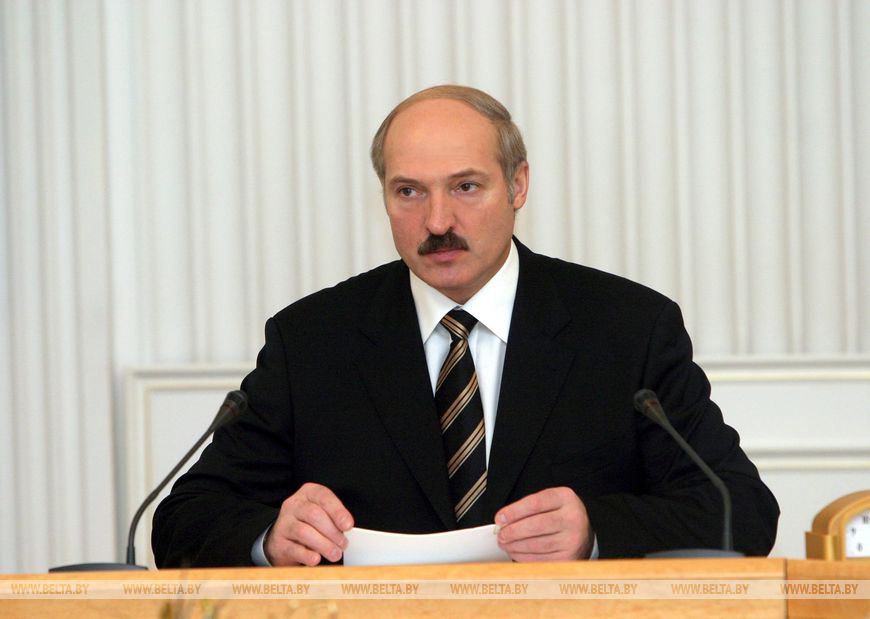
The responsibility for coordinating activities in the Naroch area was assigned to the Belarus President Property Management Directorate. Aleksandr Lukashenko immediately warned: the accountability for implementing Naroch development initiatives will be extremely rigorous.
The challenges extended beyond environmental concerns. Aleksandr Lukashenko urged to harness the area’s tremendous potential to improve living standards for local communities, create new jobs and ensure sustainable livelihoods. Tourism can be a highly lucrative business if it gets enough attention. We spend huge money at foreign resorts, thus subsidizing the infrastructure and economies of other nations. Consider the benefits if this money remained within our country. Naturally, achieving this goal requires establishing proper infrastructure.

“We don’t know how to monetize tourism, often failing to capitalize on readily available opportunities. Mega-projects like the full-scale development of the Augustow Canal aren’t the only option, though we should pursue this too. But aren’t our historic palaces, manor houses, and low-budget rural tourism worth immediate attention? Naroch, the Sozh and the Dnieper, the Braslav Lakes, Belovezhskaya Pushcha and Nalibokskaya Pushcha – isn’t this natural beauty in Europe’s heartland enough to attract tourists? If the budget falls short and our government agencies remain as sluggish as ever, let private business step in – untie its hands. I believe this doesn’t require special directives from Minsk. Local and regional authorities are fully capable –and obligated – to act on their own,” Aleksandr Lukashenko said in 2009.
What makes the Naroch area unique?
Deputy Head of the Belarus President Property Management Directorate Anton Krayevsky noted that the Naroch resort area is truly a unique natural territory, featuring picturesque lakes, pine forests, and a mild climate.

“Most of this area is located within the protected Narochansky National Park. The territory includes popular ecological trails of the Blue Lakes complex and a diverse arboretum with over 400 plant species not native to Belarus. In 2024 alone, nearly 70,000 tourists visited the national park,” he said.
Why is Belarus’ Lake District so special?
Here is a recent example. In 2023, the government launched development initiatives for the Belarus’ Lake District (Poozerye) under the Hospitable Belarus program. This area is more than just scenic waterways, it is a historic confluence of Western and Eastern European cultures.

This land boasts ancient hillforts and burial mounds, historic estates and churches – and the nature is simply breathtaking! Visitors can immerse themselves in culinary and agritourism experiences by preparing traditional dishes, participating in folk games and rites. The shores of Belarusian lakes host exciting music festivals.
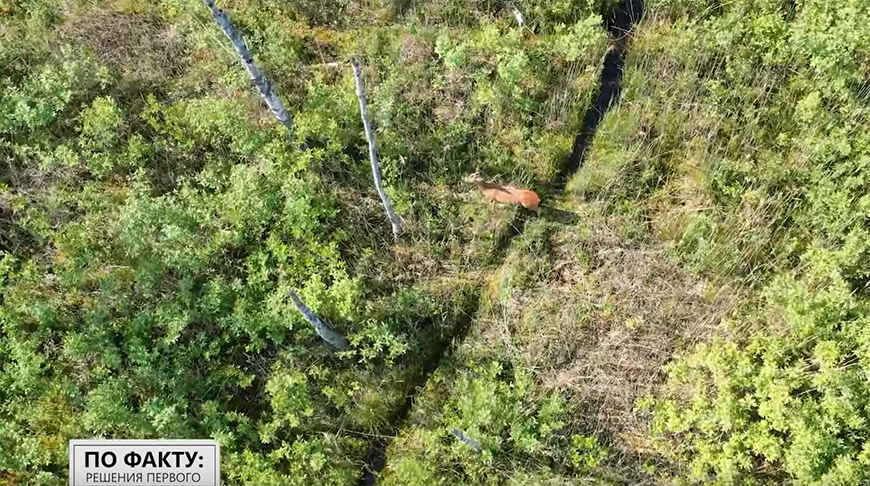
After hearing all this, wouldn't you want to pack your bags immediately and embark on an unforgettable journey?
Why did Lukashenko prioritize Naroch area?
But let us focus on Naroch. Has the government program succeeded in addressing the region's environmental issues and attracting tourists to its resorts? To find answers, Aleksandr Lukashenko personally visited this unique lake region and its sanatoriums. While the president was left generally satisfied with what he saw, the authorities decided not to rest on their laurels and developed a new state program with the focus on the Naroch resort area. One of its key goals was to better utilize natural resources while creating a world-class health and tourist center.
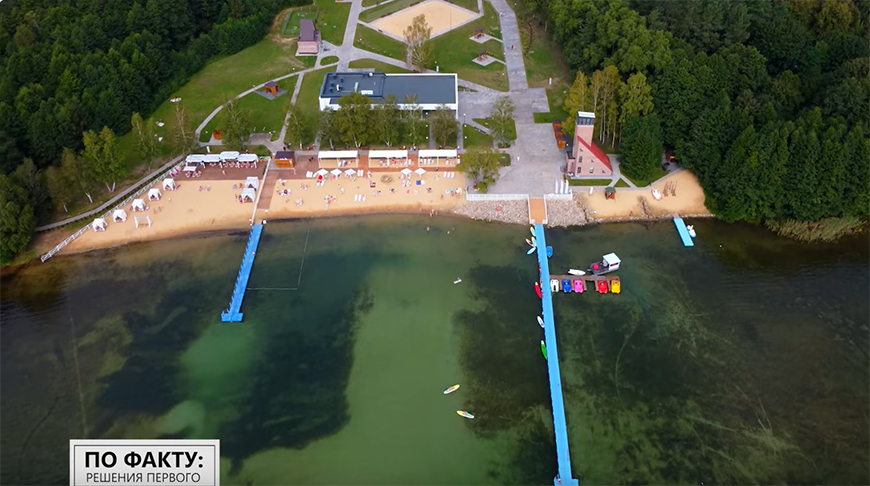
According to Aleksandr Lukashenko, Belarus' value lies not only in its central European location but also in its unparalleled environmental purity, recognized by locals and foreign visitors alike. The Naroch area welcomed slightly fewer than 3,000 foreign visitors in 2006. By 2009 the number of foreign visits increased sevenfold.
“The health of our people is the highest priority of our state. Our lake-rich Naroch area is a jewel of Belarusian land - and we have many such jewels. Our country's value isn't determined solely by our unique location in Europe's heart. What makes Belarus truly special is this unparalleled purity - you won't find such pristine environments in the civilized world's center elsewhere. Yes, there's the Amazon with its wonders, Russia has magnificent places, but nowhere else combines such unspoiled nature with developed surroundings where people actually live,” Aleksandr Lukashenko said during his visit to the Naroch area in summer 2010.
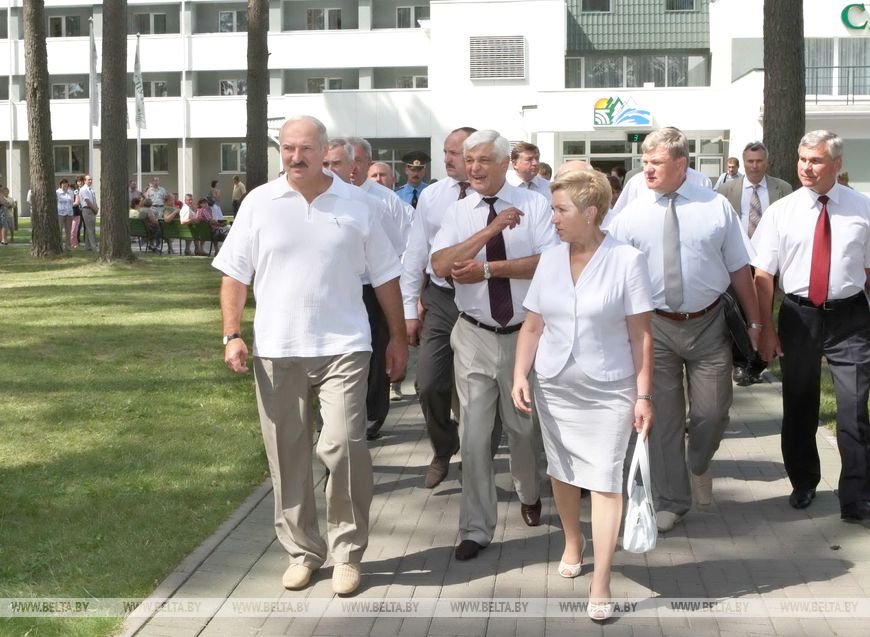
Months later, the head of state shared these impressions with Russian journalists, emphasizing how Belarusians have preserved their unique environment. The country's natural crown jewels - Belovezhskaya Pushcha, Braslav Lakes, Pripyatsky National Park, and Berezinsky Biosphere Reserve - all enjoy presidential-level protection as carefully guarded national treasures.
“You know, Europe is completely polluted. The European part of Russia isn't exactly oxygen-rich either. You still have cleanliness and order in other parts, but the European part lacks them. When Moscow was covered with heavy smog from wildfires, I was busy with tourism development issues here. Traveling through Naroch and Braslav Lakes – our key tourist areas – I kept encountering crowds everywhere. People approached me saying: ‘Aleksandr Grigoryevich, we are from Moscow and St. Petersburg. Our stay is ending, but Moscow is still covered with smog. Please, let us stay here for longer – we can't breathe there.’ The resort director told me new guests were arriving the next day with prepaid bookings. My response was: ‘Set up beds in the corridors if needed, but don't make these people leave.’ They stayed for another month here.” I gave the order that no Moscow resident should be sent away, even if their voucher had expired. So, then the temperature was 37 degrees in our northern Vitebsk Oblast. And I thought: ‘It is a blessing that we’ve preserved all this beautiful nature with its water and forests. This is a great thing’,” the Belarusian leader emphasized.

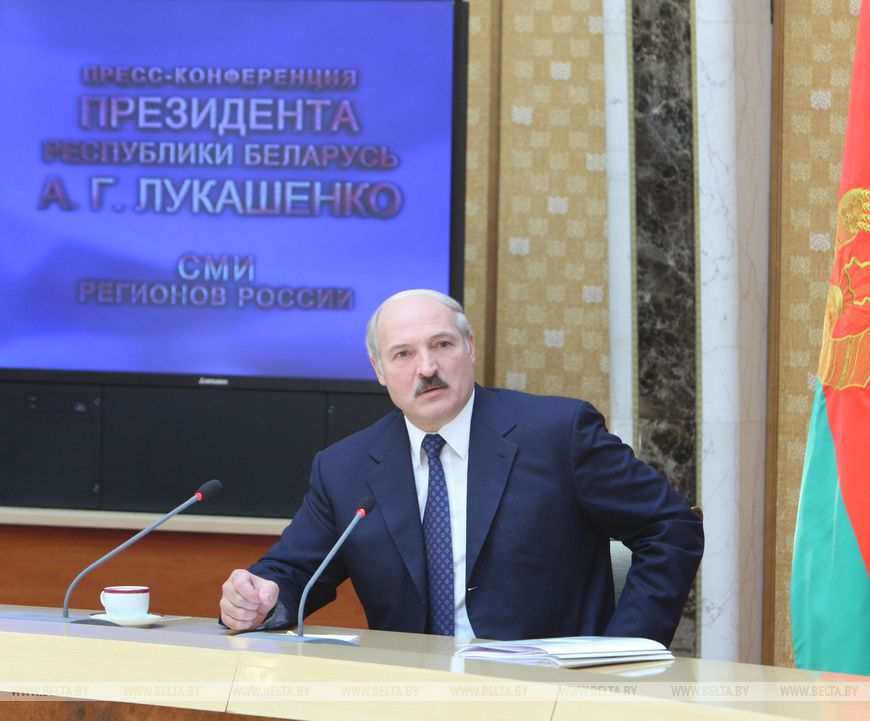
What the Naroch Lake area has to offer its visitors
Today, on the picturesque shores of Lake Naroch, you can find some of the most renowned health resorts in Belarus. Every year, over 100,000 citizens of Belarus and foreign nationals come here to relax and recover. The Naroch Lake area features a variety of sanatoriums and resorts, including the national children's center Zubrenok, hotel complexes, guesthouses, cottages, and campsites. As the saying goes, if there’s paradise on Earth, it’s the Naroch Lake area. Words don’t do it justice: it’s best seen with your own eyes.

There are two sanatoriums of the Federation of Trade Unions of Belarus in the Naroch areas: Naroch and Narochanka. In general, the trade union system operates 12 sanatoriums.
“In 2024 alone, our health improvement and spa facilities hosted approximately 140,000 people. About 28,000 of them holidayed in these two sanatoriums in the Naroch area,” said Vadim Grachev, Deputy Chairman of the Federation of Trade Unions of Belarus.
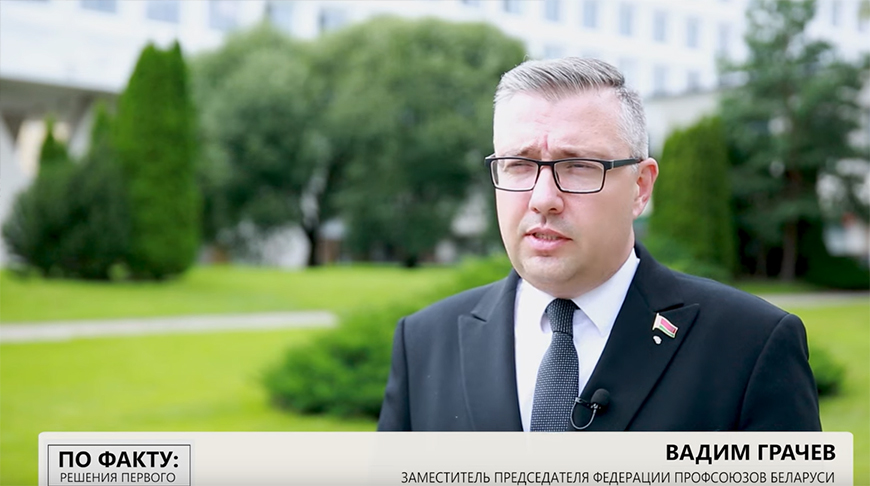
According to him, the Federation of Trade Unions of Belarus has approved an infrastructure development program for 2025-2029 to further enhance these facilities. The program includes around 350 initiatives to upgrade and renovate the sanatoriums of the trade union system.
“For Naroch sanatorium, we’re currently enhancing the coastal areabetween the lake access points. At Narochanka, we’re upgrading the swimming pool. We’ve already scheduled and will complete renovations of 48 rooms in the main building by 2026. Additionally, one of our most ambitious projects will be implemented at Narochanka. We’ve initiated technical documentation and plan to construct (with subsequent maintenance) a lakeside beach-park zone directly opposite the sanatorium on Lake Naroch shoreline,” Vadim Grachev added.
 What makes Belarusian sanatoriums so famous
What makes Belarusian sanatoriums so famous
The Belarusian national center of health resort treatment and recuperation has recently reported that Belarus’ health resorts primarily attract visitors due to their natural assets and the effectiveness of their well-being programs. More than 60% of those who experience this type of holiday return. Overall, the number of holidaymakers this year is expected to exceed 600,000, with one-third of them being foreign visitors.


Every year, guests from over 60 countries visit Belarusian health resorts. Russians are the most frequent visitors, followed by guests from Latvia and Azerbaijan. The resorts warmly welcome guests from Moscow, St. Petersburg, and from remote regions of Russia. Even tourists from the Philippines once spent their holidays near Naroch.

In 2024, the authorities developed another comprehensive plan to improve the Naroch Lake area. This plan included not only information and event-based initiatives, but also measures to strengthen the infrastructure of the facilities. In the future, a new program will be launched, but this time on a regional level. It will feature large-scale projects aimed at creating a positive image of the area, in order to attract even more attention. This reflects what Aleksandr Lukashenko emphasized: tourism development needs to receive close attention at all levels. After all, it’s not just about preserving this heritage, but also about passing it on to future generations.
© Ministry of natural resources and environmental protection of the Republic of Belarus, 2025



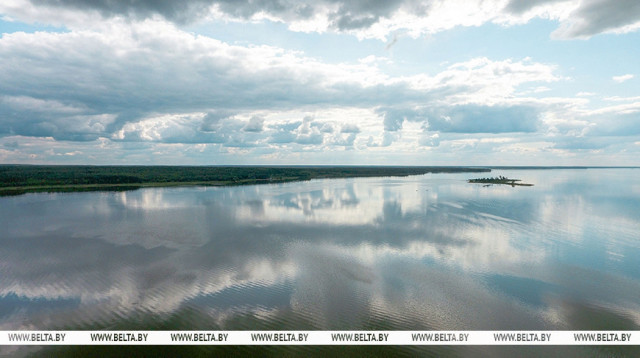
 The country also boasts nearly 11,000 lakes. The largest ones, located in the northern region, form what’s often called the country’s “blue necklace”. These lakes were created 15,000-20,000 years ago by the retreating Valdai Glacier. Belarus' largest lake, Naroch, or more precisely the area surrounding it, will be in focus of this episode.
The country also boasts nearly 11,000 lakes. The largest ones, located in the northern region, form what’s often called the country’s “blue necklace”. These lakes were created 15,000-20,000 years ago by the retreating Valdai Glacier. Belarus' largest lake, Naroch, or more precisely the area surrounding it, will be in focus of this episode.
 However, due to fundamental mismanagement and unacceptable neglect by both national and local authorities toward this invaluable national asset, no substantive improvement was achieved in rehabilitating the lake and adjacent areas. This failure ultimately compelled Aleksandr Lukashenko to convene a meeting to adopt a state program for ecological restoration of the Naroch area.
However, due to fundamental mismanagement and unacceptable neglect by both national and local authorities toward this invaluable national asset, no substantive improvement was achieved in rehabilitating the lake and adjacent areas. This failure ultimately compelled Aleksandr Lukashenko to convene a meeting to adopt a state program for ecological restoration of the Naroch area.
 The responsibility for coordinating activities in the Naroch area was assigned to the Belarus President Property Management Directorate. Aleksandr Lukashenko immediately warned: the accountability for implementing Naroch development initiatives will be extremely rigorous.
The responsibility for coordinating activities in the Naroch area was assigned to the Belarus President Property Management Directorate. Aleksandr Lukashenko immediately warned: the accountability for implementing Naroch development initiatives will be extremely rigorous.
 “We don’t know how to monetize tourism, often failing to capitalize on readily available opportunities. Mega-projects like the full-scale development of the Augustow Canal aren’t the only option, though we should pursue this too. But aren’t our historic palaces, manor houses, and low-budget rural tourism worth immediate attention? Naroch, the Sozh and the Dnieper, the Braslav Lakes, Belovezhskaya Pushcha and Nalibokskaya Pushcha – isn’t this natural beauty in Europe’s heartland enough to attract tourists? If the budget falls short and our government agencies remain as sluggish as ever, let private business step in – untie its hands. I believe this doesn’t require special directives from Minsk. Local and regional authorities are fully capable –and obligated – to act on their own,” Aleksandr Lukashenko said in 2009.
“We don’t know how to monetize tourism, often failing to capitalize on readily available opportunities. Mega-projects like the full-scale development of the Augustow Canal aren’t the only option, though we should pursue this too. But aren’t our historic palaces, manor houses, and low-budget rural tourism worth immediate attention? Naroch, the Sozh and the Dnieper, the Braslav Lakes, Belovezhskaya Pushcha and Nalibokskaya Pushcha – isn’t this natural beauty in Europe’s heartland enough to attract tourists? If the budget falls short and our government agencies remain as sluggish as ever, let private business step in – untie its hands. I believe this doesn’t require special directives from Minsk. Local and regional authorities are fully capable –and obligated – to act on their own,” Aleksandr Lukashenko said in 2009.
 “Most of this area is located within the protected Narochansky National Park. The territory includes popular ecological trails of the Blue Lakes complex and a diverse arboretum with over 400 plant species not native to Belarus. In 2024 alone, nearly 70,000 tourists visited the national park,” he said.
“Most of this area is located within the protected Narochansky National Park. The territory includes popular ecological trails of the Blue Lakes complex and a diverse arboretum with over 400 plant species not native to Belarus. In 2024 alone, nearly 70,000 tourists visited the national park,” he said.
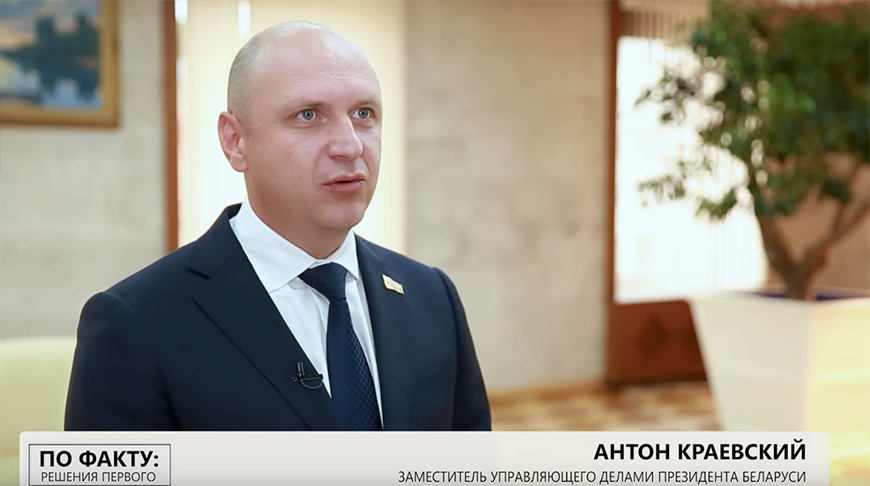 In recent years, Priozerny has renovated and improved a beach area, which has become a popular attraction not only for its guests and local residents but also for other visitors to the resort zone. As for Sosny, a new 100-room building was constructed last year and has been in high demand ever since. It was commissioned on 24 December and was fully booked for the New Year holidays, which is clear evidence that this area is highly attractive to tourists. We must make the most of this potential,” he said.
In recent years, Priozerny has renovated and improved a beach area, which has become a popular attraction not only for its guests and local residents but also for other visitors to the resort zone. As for Sosny, a new 100-room building was constructed last year and has been in high demand ever since. It was commissioned on 24 December and was fully booked for the New Year holidays, which is clear evidence that this area is highly attractive to tourists. We must make the most of this potential,” he said.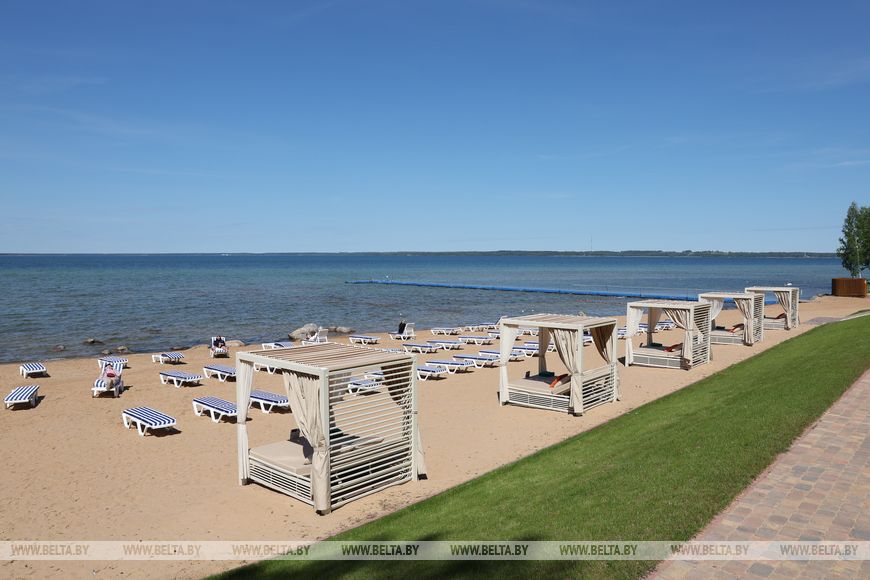
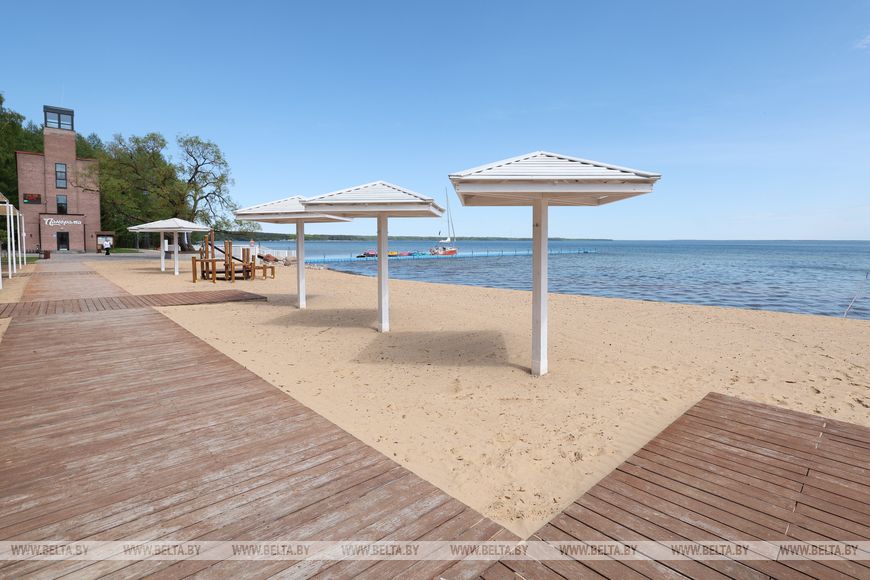

 This land boasts ancient hillforts and burial mounds, historic estates and churches – and the nature is simply breathtaking! Visitors can immerse themselves in culinary and agritourism experiences by preparing traditional dishes, participating in folk games and rites. The shores of Belarusian lakes host exciting music festivals.
This land boasts ancient hillforts and burial mounds, historic estates and churches – and the nature is simply breathtaking! Visitors can immerse themselves in culinary and agritourism experiences by preparing traditional dishes, participating in folk games and rites. The shores of Belarusian lakes host exciting music festivals. 




 There are two sanatoriums of the Federation of Trade Unions of Belarus in the Naroch areas: Naroch and Narochanka. In general, the trade union system operates 12 sanatoriums.
There are two sanatoriums of the Federation of Trade Unions of Belarus in the Naroch areas: Naroch and Narochanka. In general, the trade union system operates 12 sanatoriums.
 According to him, the Federation of Trade Unions of Belarus has approved an infrastructure development program for 2025-2029 to further enhance these facilities. The program includes around 350 initiatives to upgrade and renovate the sanatoriums of the trade union system.
According to him, the Federation of Trade Unions of Belarus has approved an infrastructure development program for 2025-2029 to further enhance these facilities. The program includes around 350 initiatives to upgrade and renovate the sanatoriums of the trade union system.
 What makes Belarusian sanatoriums so famous
What makes Belarusian sanatoriums so famous

 Every year, guests from over 60 countries visit Belarusian health resorts. Russians are the most frequent visitors, followed by guests from Latvia and Azerbaijan. The resorts warmly welcome guests from Moscow, St. Petersburg, and from remote regions of Russia. Even tourists from the Philippines once spent their holidays near Naroch.
Every year, guests from over 60 countries visit Belarusian health resorts. Russians are the most frequent visitors, followed by guests from Latvia and Azerbaijan. The resorts warmly welcome guests from Moscow, St. Petersburg, and from remote regions of Russia. Even tourists from the Philippines once spent their holidays near Naroch. In 2024, the authorities developed another comprehensive plan to improve the Naroch Lake area. This plan included not only information and event-based initiatives, but also measures to strengthen the infrastructure of the facilities. In the future, a new program will be launched, but this time on a regional level. It will feature large-scale projects aimed at creating a positive image of the area, in order to attract even more attention. This reflects what Aleksandr Lukashenko emphasized: tourism development needs to receive close attention at all levels. After all, it’s not just about preserving this heritage, but also about passing it on to future generations.
In 2024, the authorities developed another comprehensive plan to improve the Naroch Lake area. This plan included not only information and event-based initiatives, but also measures to strengthen the infrastructure of the facilities. In the future, a new program will be launched, but this time on a regional level. It will feature large-scale projects aimed at creating a positive image of the area, in order to attract even more attention. This reflects what Aleksandr Lukashenko emphasized: tourism development needs to receive close attention at all levels. After all, it’s not just about preserving this heritage, but also about passing it on to future generations.